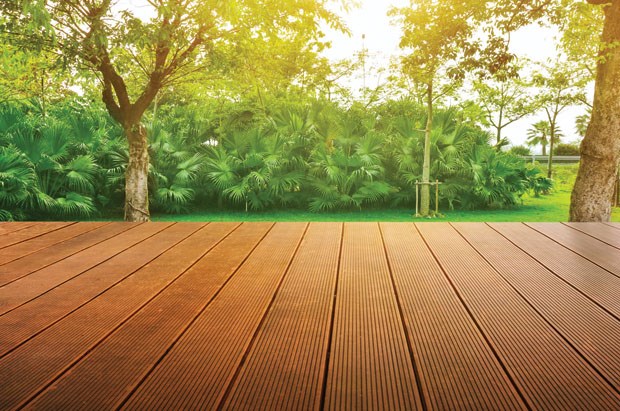Decks add character and functionality to a home, increasing outdoor entertaining space and often times improving the resale value. Homeowners have various options when choosing decking materials, but one such option, composite decking, is growing in popularity.
Decks used to primarily be made from pressuretreated lumber. While lumber remains a popular material, more and more homeowners are opting for composite decking products.
As anyone who has pressure-washed, stained and sealed wood decks can attest, such spaces require lots of upkeep to look new year after year. Composite decks require much less maintenance, making them highly attractive to homeowners who would rather spend time using their decks instead of maintaining them.
Composite decking is any type of decking material that is formulated from different recycled materials. The majority of these materials include hard plastic and wood shavings of pulp. Unlike wood, which can fade, crack and rot, composite decking, which has been available for roughly a decade, does not degrade quickly and requires little upkeep.
Available in a variety of wood colours to match outdoor decor, composite decks also can feature artificial wood grains to make them look similar to wood planks. Although composite decks are not completely impervious to the elements, with some occasional washing to impede mold growth and new technology that has improved stain-resistance, many of the pitfalls of other materials can be avoided with composite decks.
Composite decks do have a few drawbacks. They can be expensive - nearly double the initial cost of wood decks. And although they don't rot, composite planks can scratch. Without refinishing, damaged boards will need to be replaced. Harsh chemicals may fade colour and damage the composite materials.



